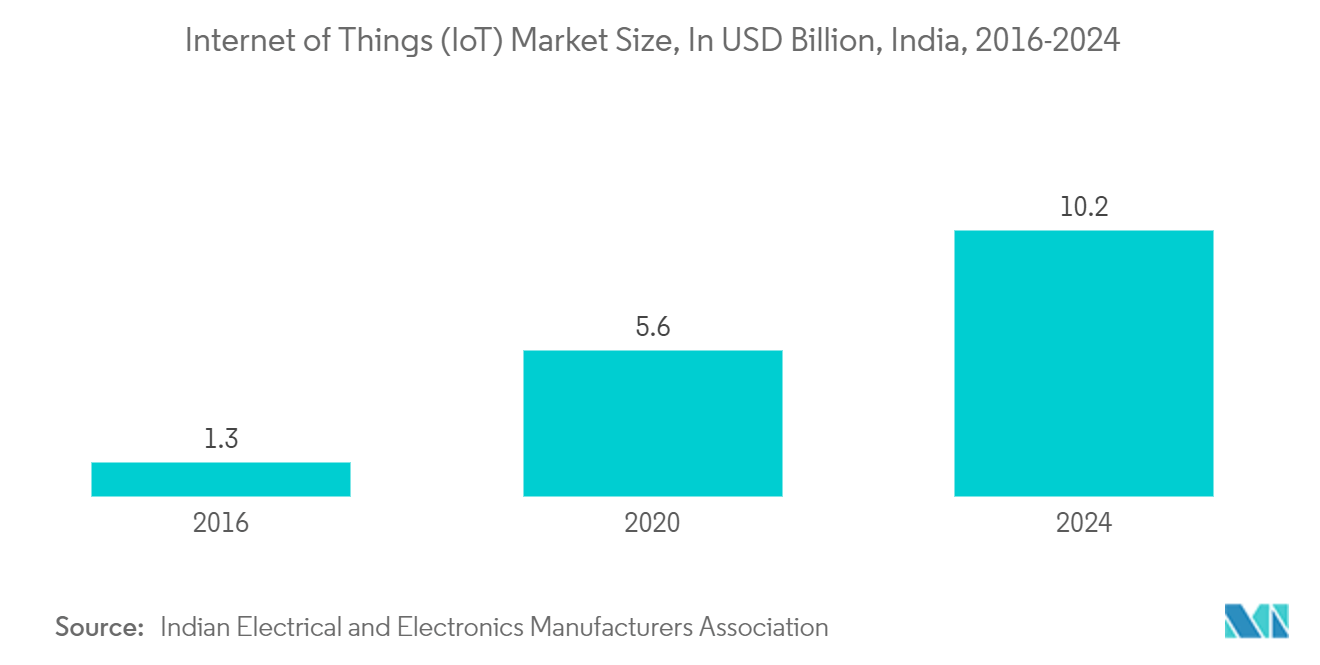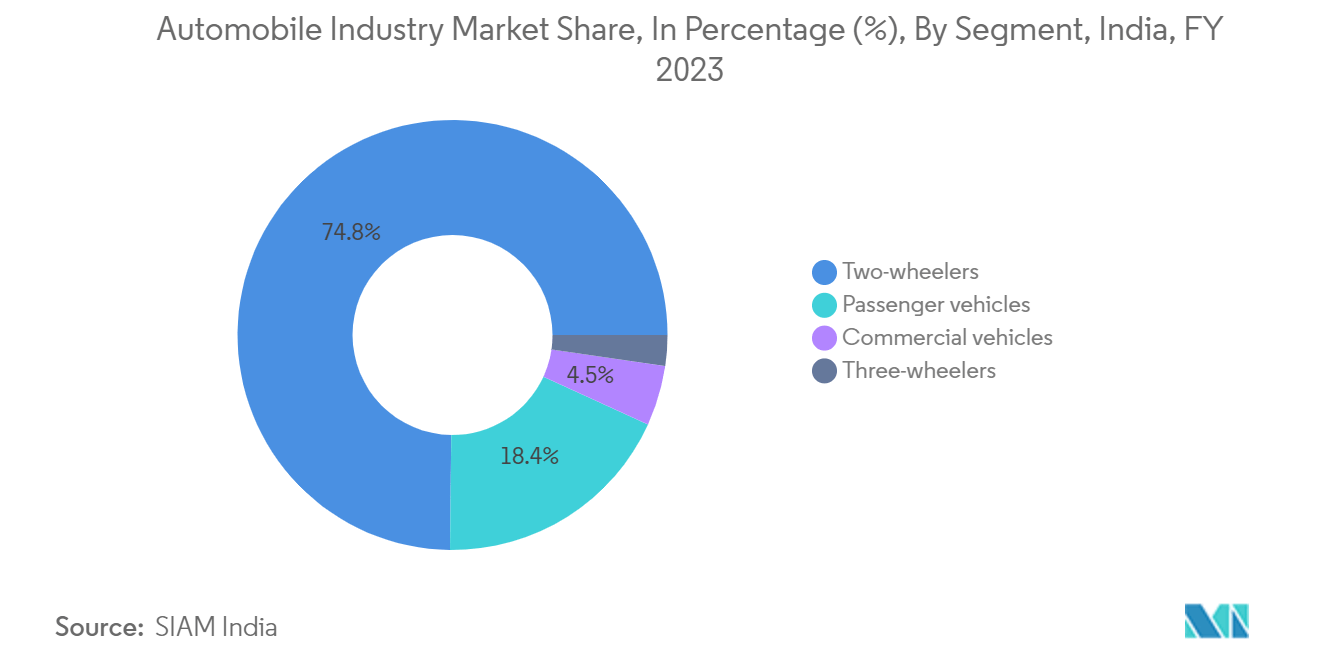Market Trends of India Semiconductor Industry
The Sensors and Actuators Segment is Expected to Witness Significant Growth
- The increasing use of sensors in the Indian market has prompted vendors and users to make significant investments in the growth of this market. The automotive and consumer electronics industries are also playing a key role in driving demand for sensors in India. The expansion of the sensor market can also be linked to the overall growth of the industrial sector, as well as the introduction of micro electro mechanical systems (MEMS) sensors.
- The increasing demand for automation and the widespread use of devices such as tablets, PCs, smartphones, and smartwatches, along with the growing automotive sales and advancements in consumer electronics technology, are expected to be the main factors driving the Indian sensors market.
- Furthermore, the manufacturing industry in India has been experiencing significant growth due to the country's expanding population. Investments in the sector are increasing, and initiatives like 'Make in India' are aimed at positioning India as a global manufacturing hub. The manufacturing industry saw a 4.7% annual production growth rate in the fiscal year 2023. Numerous organizations and institutions are actively involved in this initiative, with notable achievements such as the development of the first "Make in India" human breath sensor by researchers at IIT Jodhpur in February 2024. This sensor is based on metal oxides and nano silicon and operates at room temperature.
- The advancement of factory automation and the adoption of Industry 4.0 are greatly dependent on the use of industrial sensors. These sensors, such as motion, environmental, and vibration sensors, play a crucial role in the process. India's industrial sectors are set for economic and demographic growth, supporting both local businesses and export prospects, which are expected to see substantial development.
- In the field of industrial automation, process control, robotics, and equipment, sensors are essential. India has also been making significant investments in the advancement of the Internet of Things (IoT) technology and smart city projects. According to a NASSCOM report, the Indian IoT market is expected to reach a value of USD 15 billion by 2025. Various industries, including agriculture, healthcare, manufacturing, and smart cities, are experiencing positive changes driven by IoT innovations.

Growing Automotive Industry and EV Demand Across India to Propel the Market
- India's automotive and EV industry is poised for a transformative journey that has the potential to greatly impact the nation's transportation landscape. This industry has the ability to drive change, create a more sustainable future for India, and contribute to global initiatives to combat climate change and improve the quality of urban living. According to CII, India has set ambitious goals to increase the percentage of EV sales in various vehicle categories by 2030.
- According to information provided by IBEF, it is projected that India has the potential to emerge as the leading electric vehicle (EV) market by 2030, presenting a significant investment opportunity of over USD 200 billion within the next 8-10 years. There is also a growing need for automation in key industries like food and beverage, manufacturing, and pharmaceuticals, driven by workforce constraints and the necessity for remote monitoring and operations. Consequently, there is a rising demand for a variety of sensors to cater to this increase in automation requirements.
- In line with the 'Make in India' initiative, the Indian government is placing emphasis on the growth of automobile manufacturing. The Auto Mission Plan (AMP) 2016-26 forecasts a significant increase in the passenger car market to 9.4 million units by 2026, resulting in a higher demand for sensors in the region.
- The success of EVs can be attributed to a variety of factors, such as government initiatives at both the central and state levels, a strong focus from the industry, and the increasing acceptance of electric vehicles by the public. Programs like FAME India, the PLI scheme for the Auto and Auto Component, and the PLI scheme for manufacturing ACC batteries have played a crucial role in promoting local production and encouraging the adoption of EVs.
- India is becoming a prominent destination for sourcing auto components on a global scale, with the industry exporting more than 25% of its production each year. For instance, Hyundai Motor expressed its intention to invest USD 2.45 billion in Tamil Nadu over the next 10 years to further develop its electric vehicle initiatives in India. The company is also looking to assemble EV battery packs and establish 100 charging stations for electric vehicles.
- Furthermore, the NITI Aayog and Rocky Mountain Institute (RMI) have forecasted that India's electric vehicle (EV) finance sector is projected to reach INR 3.7 lakh crore (USD 50 billion) by 2030. Leading automakers have already started making significant investments across different segments of the industry to cater to the increasing demand. For example, in March 2023, Foxconn, a tech company based in Taiwan, revealed its plans to invest in the development of semiconductors and EVs in India.


